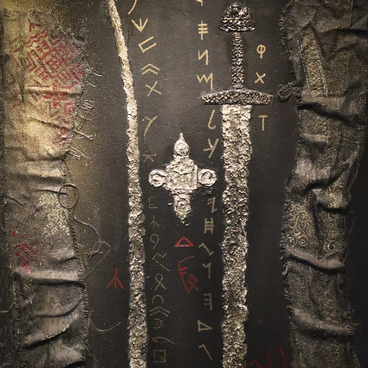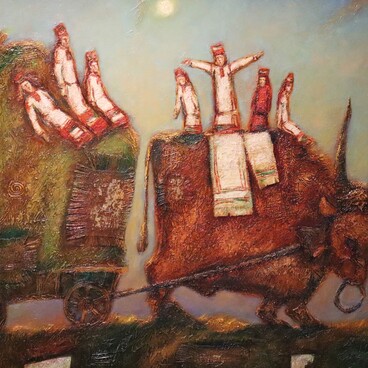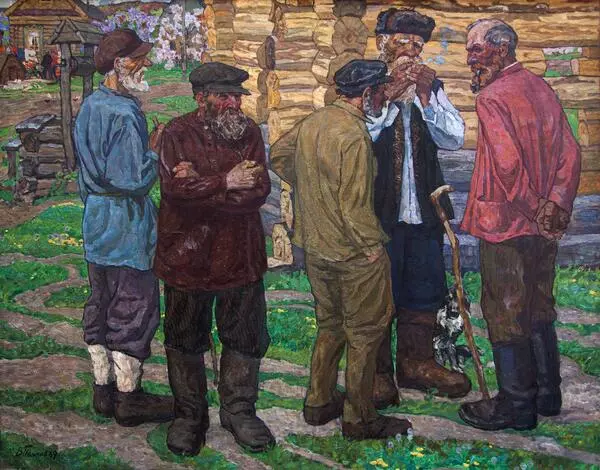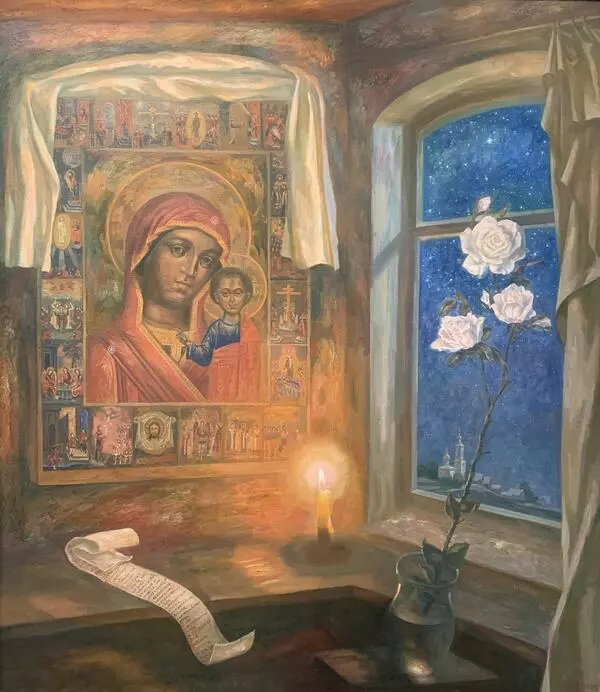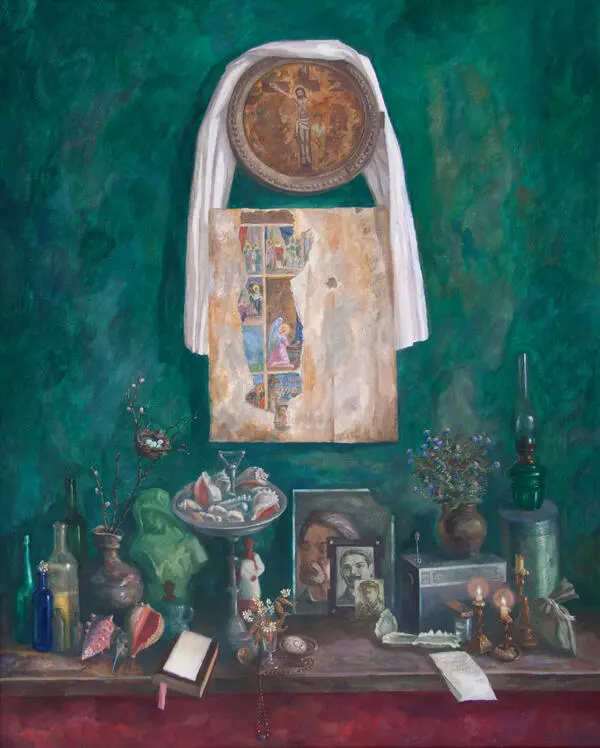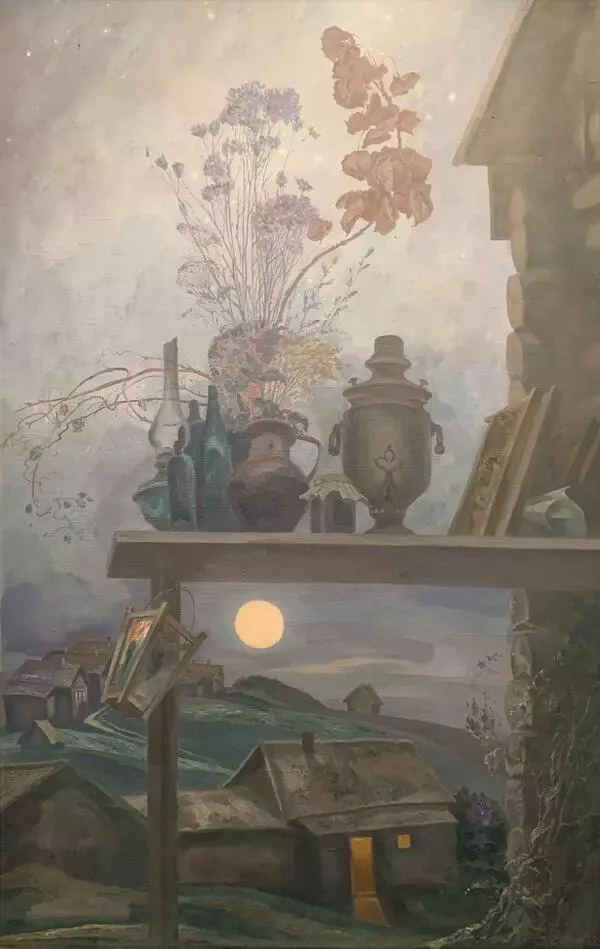Valentin Alekseevich Popkov was born in the year the Great Patriotic War began. In his childhood and youth, he lived through the hardships of war, he witnessed the victory of the Soviet people over fascism, and the period of the restoration of his Motherland from ruins and ashes. It was a tragic and romantic time. Romantic heroics were present throughout the entire culture of Soviet society. These childhood impressions were many times reflected in the artist’s work not only in the plots of his paintings, but also in their artistic composition. Although Valentin Popkov did not fight in the war himself, he carried the memory of those years and the pride in Russian military valor through his whole life in his heart.
In the 1960s, Valentin Popkov mastered the artistic achievements of the “Severe style” painters, developing their strive for full-fledged themes and seriousness of the image. In the late 1970s, the artist created large thematic paintings with multi-figure compositions, reflecting his ideas about being part of a mighty state.
By that time, the main features characteristic of the artist’s individual manner had developed: the attraction to large-scale monumental images and their generalization, on the one hand, and the focus on the inner world of a person and the desire for a psychological interpretation of the image, on the other.
This is most clearly expressed in the large-scale history painting “During the War”. The canvas is replete with ambiguous symbolic content. The artist pays special attention to constructing the composition. He uses two compositional centers (the groups of people in the first and second planes), thereby indicating the scale of the space and a special emotional distress shared among the depicted people.
The scene of men leaving the village to fight in the war is highly dramatic. The group of men in the foreground represents a single monolith — with a confident measured tread, they seem to march beyond the frame of the picture. The heroes do not know whether they will return to their native places, but their movements and faces show bravery, courage, and determination to defend the freedom of their Fatherland.
In the background, on a hill, there is a group of women, old men and children left to wait for the return of their sons, husbands and fathers from the front. These two compositional centers already look distant from each other, as if thousands of kilometers lie between them, and the earth has rippled from explosions.
There is also a subtle interconnection between the groups. A young man looks back at his mother who stands alone on the side, she, in turn, looks at him: a thin string of glances between the two relatives unites these groups. The composition closes in a circle, symbolically expressing hope for a victorious return.
In the 1960s, Valentin Popkov mastered the artistic achievements of the “Severe style” painters, developing their strive for full-fledged themes and seriousness of the image. In the late 1970s, the artist created large thematic paintings with multi-figure compositions, reflecting his ideas about being part of a mighty state.
By that time, the main features characteristic of the artist’s individual manner had developed: the attraction to large-scale monumental images and their generalization, on the one hand, and the focus on the inner world of a person and the desire for a psychological interpretation of the image, on the other.
This is most clearly expressed in the large-scale history painting “During the War”. The canvas is replete with ambiguous symbolic content. The artist pays special attention to constructing the composition. He uses two compositional centers (the groups of people in the first and second planes), thereby indicating the scale of the space and a special emotional distress shared among the depicted people.
The scene of men leaving the village to fight in the war is highly dramatic. The group of men in the foreground represents a single monolith — with a confident measured tread, they seem to march beyond the frame of the picture. The heroes do not know whether they will return to their native places, but their movements and faces show bravery, courage, and determination to defend the freedom of their Fatherland.
In the background, on a hill, there is a group of women, old men and children left to wait for the return of their sons, husbands and fathers from the front. These two compositional centers already look distant from each other, as if thousands of kilometers lie between them, and the earth has rippled from explosions.
There is also a subtle interconnection between the groups. A young man looks back at his mother who stands alone on the side, she, in turn, looks at him: a thin string of glances between the two relatives unites these groups. The composition closes in a circle, symbolically expressing hope for a victorious return.


